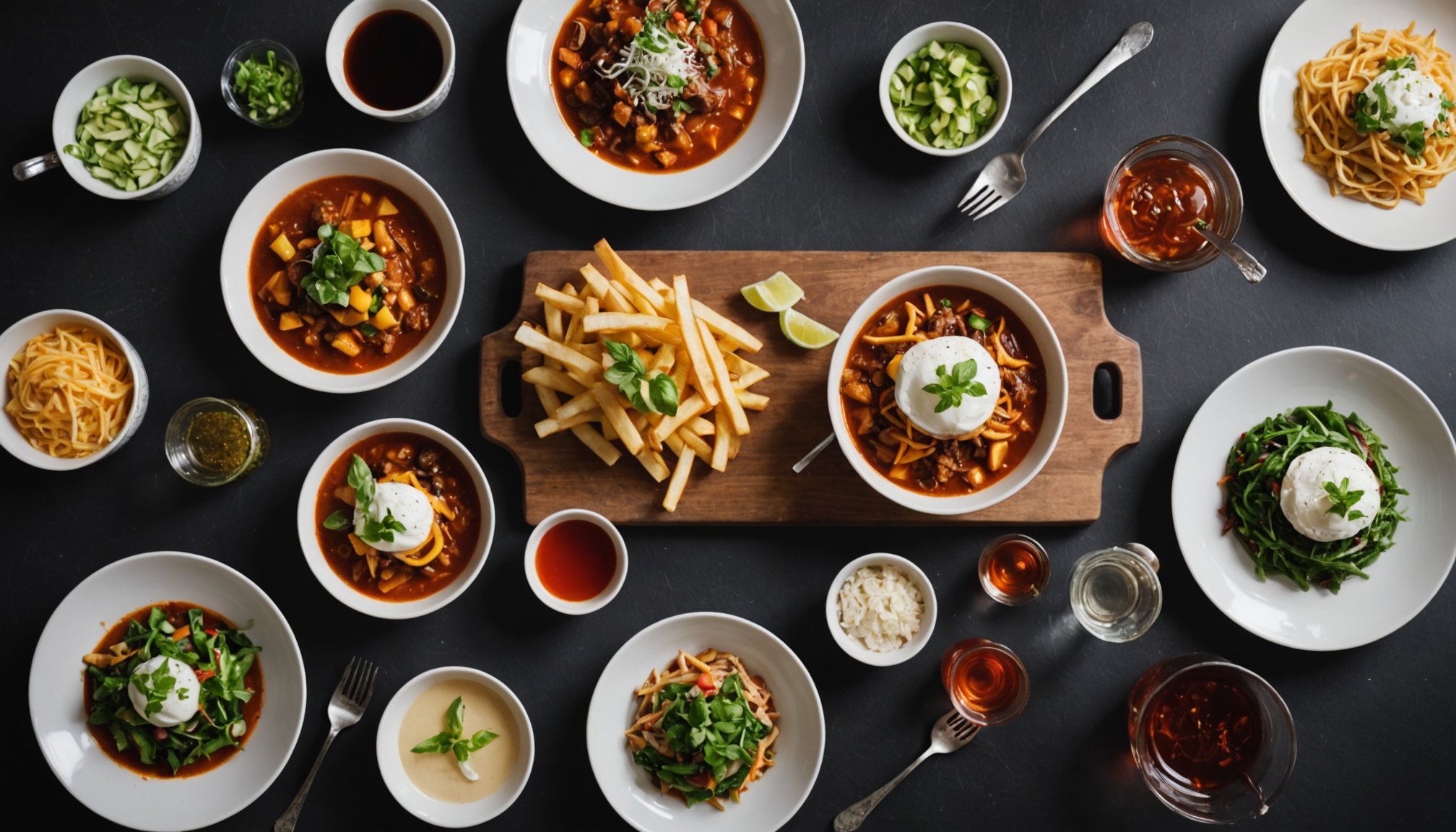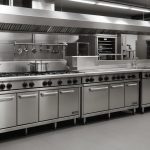Pop-up restaurants offer a unique opportunity to showcase culinary creativity and engage with customers in innovative ways. Success hinges on understanding the key ingredients that create an unforgettable dining experience. Not only does exceptional food play a role, but location, branding, and customer interaction are equally important. This guide will explore essential strategies to help aspiring restaurateurs launch a captivating pop-up venture that stands out. Ready to create a memorable experience? Let’s dive into the essentials.
Understanding the Concept of a Pop-Up Restaurant
Exploring the pop-up restaurant phenomenon offers insight into its dynamic nature. Essentially, a pop-up restaurant is a temporary dining venue, often set up in unexpected locations. These establishments are designed to operate for a limited time, creating an exclusive experience.
Also read : Exploring Solar Energy: Advantages and Obstacles for Remote Dining Establishments
Definition and Purpose
The primary purpose of a pop-up restaurant is to provide chefs and entrepreneurs with a platform to experiment with new concepts and menus without the long-term commitment of a traditional restaurant. This flexibility allows for creative freedom and innovation.
Historical Context and Evolution
Pop-up restaurants have evolved significantly over the years. Initially, they emerged as underground dining events, often secretive and exclusive. Over time, they have become more mainstream, embraced by culinary enthusiasts worldwide. The evolution reflects a shift in dining culture towards more adventurous and spontaneous experiences.
Also read : Essential Guidelines for Safely Preparing and Serving Raw Shellfish in Seafood Restaurants
The Appeal for Chefs and Entrepreneurs
For chefs and entrepreneurs, pop-up restaurants present numerous advantages. They offer a low-risk opportunity to test new ideas and gather real-time feedback from diners. This model reduces overhead costs and allows for a more agile business approach. Additionally, the novelty of pop-up experiences can generate buzz and attract media attention, providing a valuable marketing boost.
- Benefits:
- Low-risk experimentation
- Reduced costs
- Enhanced publicity opportunities
Choosing the Right Location
Finding the perfect spot for your pop-up restaurant is crucial for success.
Factors to Consider
Selecting an ideal pop-up restaurant location involves several considerations. The right spot can significantly influence the venture's success. Foot traffic is a primary factor; areas with high pedestrian activity increase the likelihood of attracting spontaneous diners. Visibility also plays a crucial role. A location that is easily seen and accessible can draw more attention and potential customers.
Importance of Foot Traffic and Visibility
A strategic location with robust foot traffic ensures a steady stream of potential patrons. For instance, setting up near busy shopping districts or popular events can maximize exposure. Visibility enhances the pop-up restaurant's appeal, making it easier for people to discover and visit the venue.
Legal and Zoning Considerations
Understanding legal and zoning requirements is essential for operating a pop-up restaurant. Each area may have specific regulations concerning temporary dining establishments. Ensuring compliance with local laws helps avoid unnecessary complications.
- Key Considerations:
- High foot traffic areas
- Prominent visibility
- Compliance with zoning laws
By carefully evaluating these aspects, entrepreneurs can choose a pop-up restaurant location that optimizes both visibility and accessibility, ensuring a successful venture.
Crafting an Engaging Menu
Designing a pop-up restaurant menu requires balancing creativity and practicality.
Elements of a Successful Pop-Up Menu
Creating a successful pop-up restaurant menu involves several critical elements. First, it should reflect the unique concept of the pop-up, offering dishes that intrigue and entice diners. A well-designed menu balances creativity with feasibility, ensuring that each dish can be prepared efficiently given the temporary setup.
Balancing Creativity with Feasibility
While creativity is key, feasibility must not be overlooked. Dishes should be innovative yet practical, considering the limited kitchen resources typical of pop-up restaurants. This balance ensures smooth operations and consistent quality, essential for maintaining a positive dining experience.
Seasonal and Local Ingredient Considerations
Incorporating seasonal and local ingredients can enhance the menu's appeal. This approach not only supports local producers but also ensures freshness and flavor. Utilizing ingredients in season can inspire new dishes, keeping the pop-up restaurant menu dynamic and relevant.
- Key Elements:
- Reflect unique concept
- Balance creativity and feasibility
- Use seasonal and local ingredients
By focusing on these elements, chefs can craft a pop-up restaurant menu that captivates guests while remaining practical and efficient, ensuring a memorable dining experience.
Marketing and Promotion Strategies
Explore impactful strategies for promoting your pop-up restaurant.
Utilizing Social Media for Effective Outreach
Harnessing the power of social media is crucial for successful pop-up restaurant marketing. Platforms like Instagram and Facebook offer direct channels to engage with potential customers. By posting visually appealing content, such as photos of dishes or behind-the-scenes videos, you can create excitement and anticipation. Consistent updates and interactive posts help maintain interest and attract a loyal following.
Collaborating with Local Influencers and Food Bloggers
Partnering with local influencers and food bloggers can significantly boost your pop-up restaurant marketing efforts. Influencers possess established audiences that trust their recommendations. By inviting them to exclusive tastings or events, they can share their experiences with a wider audience, generating buzz and credibility for your venture.
Creating Buzz Through Unique Events and Promotions
Organizing unique events and promotions is an effective way to create buzz. Consider hosting themed nights or offering limited-time menu items to draw attention. Special promotions, such as discounts for early reservations or social media contests, can also enhance your pop-up restaurant marketing strategy.
- Key Strategies:
- Leverage social media platforms
- Engage local influencers
- Host special events and promotions
By implementing these strategies, your pop-up restaurant can achieve greater visibility and success.
Staffing and Team Management
Managing the right team is crucial for a successful pop-up restaurant.
Determining Staffing Needs
For a pop-up restaurant, understanding staffing needs is essential. The temporary nature of the operation requires a flexible approach. Assess the volume of expected diners and the complexity of the menu to determine the number of staff members needed. Consider roles such as chefs, servers, and hosts, ensuring each position is filled to maintain seamless service.
Training and Onboarding
Training and onboarding staff for a short-term event can be challenging. Focus on concise and effective training sessions that highlight the unique aspects of the pop-up restaurant. Emphasize the importance of adaptability and quick learning. A well-prepared team will ensure a smooth operation and enhance the dining experience.
Importance of Teamwork and Communication
Effective teamwork and communication are vital in a fast-paced environment. Encourage open dialogue and collaboration among team members to handle the dynamic demands of a pop-up restaurant. Clear communication can prevent misunderstandings and ensure that everyone is aligned with the event's goals.
- Key Points:
- Assess staffing needs
- Focus on concise training
- Foster teamwork and communication
By prioritizing these aspects, your pop-up restaurant can operate efficiently, providing an exceptional experience for diners.
Enhancing the Customer Experience
Transforming each visit into a memorable occasion is key for a pop-up restaurant.
Designing an Inviting Atmosphere and Ambiance
Creating an inviting atmosphere is crucial for a pop-up restaurant customer experience. The ambiance should reflect the unique concept of the pop-up, using decor and lighting to set the mood. Consider elements like music and seating arrangements to enhance comfort and enjoyment. A well-designed space can make guests feel welcome and eager to return.
Engaging with Guests to Create Memorable Interactions
Engagement is a cornerstone of a remarkable pop-up restaurant customer experience. Staff should be trained to interact warmly and attentively with diners, offering personalized service. Encouraging chefs to explain dishes or inviting guests to participate in small events can foster a connection. These interactions leave a lasting impression, turning a simple meal into a memorable occasion.
Collecting Feedback for Continuous Improvement
Gathering feedback is vital for refining the pop-up restaurant customer experience. Implement methods such as comment cards or digital surveys to gather insights. Use this feedback to identify areas for improvement and innovate continuously.
- Key Feedback Methods:
- Comment cards
- Digital surveys
- Direct guest interactions
By focusing on these aspects, a pop-up restaurant can ensure that each visit is a unique and satisfying experience for its patrons.
Logistics and Operational Planning
Efficient planning ensures the success of a pop-up restaurant.
Supply Chain Management for Fresh Ingredients
Effective supply chain management is crucial for a pop-up restaurant to maintain quality and freshness. Establishing relationships with reliable suppliers ensures timely delivery of fresh ingredients. Consider local vendors to minimize transportation time and support community businesses. This approach not only guarantees ingredient freshness but also aligns with sustainable practices.
Equipment and Setup Considerations for Efficiency
Selecting the right equipment and setup is vital for operational efficiency in a pop-up restaurant. Portable kitchen appliances and modular furniture can adapt to various locations and layouts. Prioritize equipment that is easy to transport and assemble, ensuring a quick setup and breakdown. This flexibility allows the team to focus on delivering an exceptional dining experience.
Timeline for Planning and Executing the Pop-Up
A well-structured timeline is essential for the successful execution of a pop-up restaurant. Begin with a detailed plan that outlines each phase, from concept development to post-event evaluation. Allocate time for securing permits, arranging supply chain logistics, and setting up equipment.
- Key Timeline Phases:
- Concept development
- Permits and logistics coordination
- Setup and execution
By adhering to a clear timeline, pop-up restaurants can ensure smooth operations and a memorable experience for diners.
Financial Planning and Budgeting
Effective financial strategies are vital for a successful pop-up restaurant venture.
Estimating Costs and Setting a Budget
Accurate financial planning is crucial for any pop-up restaurant. Begin by estimating costs, including venue rental, staffing, and supply chain logistics. Establishing a comprehensive budget helps manage expenses and anticipate potential financial challenges. Consider variable costs like marketing and promotions, which can fluctuate based on the scope of your campaign.
Pricing Strategies for Profitability
Developing effective pricing strategies is essential for ensuring profitability. Analyze competitor pricing and consider the unique value your pop-up restaurant offers. Implement dynamic pricing, adjusting based on demand and special events. This flexibility can maximize revenue while maintaining customer satisfaction.
- Key Pricing Strategies:
- Competitor analysis
- Value-based pricing
- Dynamic pricing adjustments
Exploring Funding Options for Start-Up Costs
Securing funding is often a significant hurdle in pop-up restaurant financials. Explore various options, such as personal savings, loans, or crowdfunding platforms. Each option presents unique advantages and challenges. For instance, crowdfunding can engage future patrons, building community support and interest before launch.
By focusing on these financial aspects, entrepreneurs can effectively manage their pop-up restaurant financials, ensuring a stable foundation for their venture.
Compliance and Regulations
Compliance is crucial for the success of any pop-up restaurant venture.
Understanding Health and Safety Regulations
Ensuring pop-up restaurant compliance involves adhering to stringent health and safety regulations. These standards are designed to protect both staff and patrons, covering everything from food handling to sanitation practices. Familiarize yourself with local health department guidelines to avoid potential pitfalls. Regular inspections and staff training can further enhance compliance efforts.
Obtaining Necessary Permits and Licenses
Navigating the bureaucratic landscape is essential for pop-up restaurant compliance. Securing the appropriate permits and licenses is a critical step. This process varies by location, requiring entrepreneurs to understand specific local requirements. Typical permits include food service licenses and temporary event permits. Early application is advised to prevent delays.
Ensuring Compliance with Local Laws and Standards
Adhering to local laws and standards is vital for maintaining pop-up restaurant compliance. This includes zoning laws, noise ordinances, and waste disposal regulations. Understanding these legal frameworks helps avoid fines and ensures smooth operations. Engage with local authorities to clarify any ambiguities and ensure full compliance.
- Key Compliance Aspects:
- Adherence to health and safety regulations
- Acquisition of necessary permits and licenses
- Alignment with local laws and standards
By focusing on these areas, pop-up restaurant operators can ensure their ventures are both successful and compliant.











